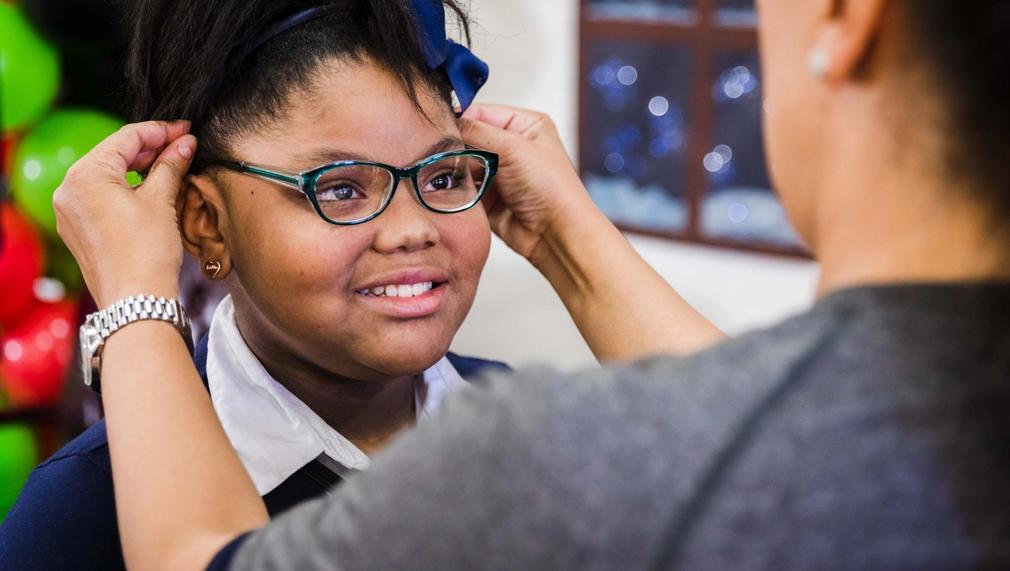No Cost Vision screenings, exams, and glasses for students in underfunded communities in Los Angeles
Founded in 2012, VTL seeks to solve a problem affecting millions of school children in underserved communities nationwide and over 750,000 in Los Angeles County. These children lack the glasses they need to read, see the board, and participate in class. VTL provides children with vision screenings, exams, and new glasses to help them succeed in school and life. With this grant VTL will provide exams and glasses as well as an event at a Dallas School where Boeing representatives will have an opportunity to see their contributions at work.

What is the primary issue area that your application will impact?
Health care access
In which areas of Los Angeles will you be directly working?
County of Los Angeles (select only if your project has a countywide benefit) LAUSD (select only if you have a district-wide partnership)
In what stage of innovation is this project, program, or initiative?
Expand existing project, program, or initiative (expanding and continuing ongoing, successful work)
What is your understanding of the issue that you are seeking to address?
One in four children naturally need glasses to see clearly in school, but in low-income areas of Los Angeles County over 90% of children who need glasses, do not have them. VTL provides vision screening, eye exams and glasses to students attending schools in underserved communities, at no cost to the students or their families. With our mobile optometric clinic program VTL removes access barriers faced by families in underserved communities including: a lack of awareness about importance of vision care, a shortage of optometric providers who accept Medicaid in low-income communities, a lack of transportation options, the inability of parents to take time from work, and overestimation of cost.
Describe the project, program, or initiative this grant will support to address the issue.
According to the Campaign for Educational Equity, “Low-income minority youth appear to suffer from disproportionately high prevalence of educationally relevant vision problems and are clearly at high risk for inadequate treatment of vision problems.” When students in need step into a VTL mobile vision clinic and receive vision care they are beginning a journey that will have a profound impact on their future. Requested funds will be used to provide vision screenings, eye exams, and glasses to students attending underserved schools in LA County including Inglewood, Lancaster, Long Beach, Pasadena, and LA Unified. VTL will prioritize schools where a majority of students (75%) qualify for free or reduced-price lunch (FRPL). Our diagnostic screening, eye exam, and process for dispensing glasses is as follows:
1. The school nurse or a VTL optician conducts vision screenings to identify students with vision difficulties.
2. VTL’s mobile clinic comes to the school, where trained optometrists conduct eye exams for every student who fails their vision screening.
3. Students who need glasses choose a frame from a wide selection; glasses are delivered three weeks later.
Describe how Los Angeles County will be different if your work is successful.
VTL's mobile vision clinic program has a significant impact on the children we help every day. Vision challenges often go unnoticed or unaddressed for years – giving the students a persistent disadvantage in achieving third-grade literacy and other educational milestones. Left untreated, the consequences of persistently poor vision can be grim. Students with uncorrected vision problems are more likely to fail at least one grade, less likely to read at grade level by third grade – a milestone critical to preventing dropout – and more likely to engage in antisocial and delinquent behavior. In fact, up to 70% of juvenile offenders have uncorrected vision issues. A '21 Johns Hopkins University study published in JAMA Ophthalmology found that children provided with by glasses by Vision To Learn made larger gains in standardized test scores in English Language and math after receiving their glasses. This improvement was equivalent to adding two to six months of instructional time in a year.
Approximately how many people will be impacted by this project, program, or initiative?
Direct Impact: 1,500
Indirect Impact: 5,000